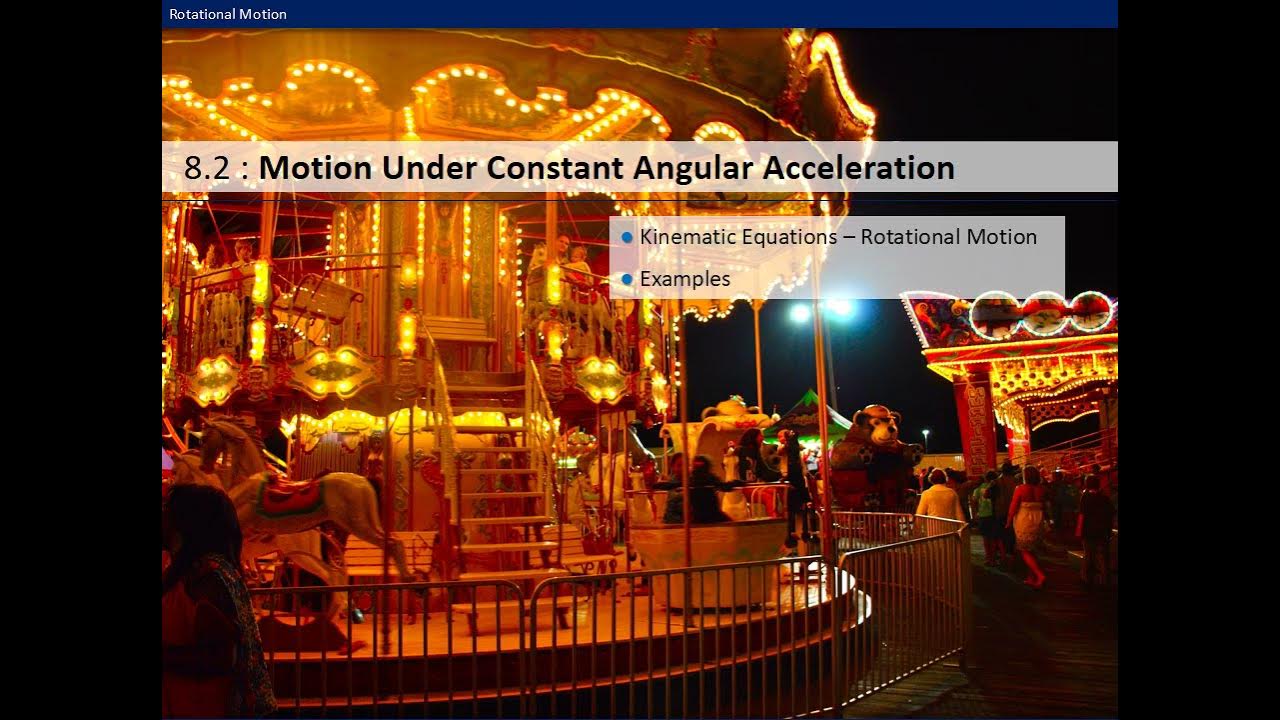Rolling object going up a frictionLESS incline
Summary
TLDRThe video discusses the concept of rolling without slipping, focusing on how rotational and linear motion are interconnected. It examines a scenario where an object rolls up a frictionless incline, emphasizing how the absence of friction affects the torque and, consequently, the rotational motion. Without friction, the object stops moving linearly but continues spinning. The video explains how this situation impacts energy distribution, leading to the object reaching a lower height compared to a situation with friction. The speaker highlights the unique and counterintuitive aspects of rotational motion in this frictionless scenario.
Takeaways
- 🔄 Rolling without slipping connects linear and rotational motion, making it easier to solve problems by reducing unknowns.
- 🌡️ When there's no slipping, no heat is produced since no kinetic friction is present, only static friction or rolling friction.
- 🚶 Objects rolling up a frictional hill stop both linear and rotational motion at the highest point before rolling back down.
- 💡 Energy at the bottom of the hill is a combination of translational and rotational kinetic energy, which is fully converted into potential energy at the top.
- 🛑 Without friction on the incline, there's no torque, meaning the object continues spinning as it did at the bottom of the hill.
- 🏔️ Without torque, the object won’t stop spinning even when its linear motion stops at the highest point.
- ⏪ Since rotational kinetic energy doesn’t change without torque, the object won’t go as high on a frictionless incline.
- ⏬ As the object comes back down the frictionless incline, its rotational motion remains unchanged, even though gravity pulls it downward.
- 🔄 The object's clockwise rotation continues unchanged on the descent, which is unusual since we expect counterclockwise rotation when moving downhill.
- ❓ The key difference to remember is that friction, or the lack of it, determines whether torque affects the object's rotational motion, leading to different outcomes.
Q & A
What does 'rolling without slipping' imply in the context of this lesson?
-Rolling without slipping implies that the linear motion and the rotational motion of an object are connected, meaning the point of contact between the object and the surface does not slide. This allows for a relationship between linear displacement, velocity, and acceleration with their rotational counterparts.
Why is it significant that there is no kinetic friction when an object rolls without slipping?
-The absence of kinetic friction in rolling without slipping is significant because it prevents heat loss. Instead, static friction, which doesn't produce heat, helps maintain the rolling motion, preserving energy in the system.
How is energy conserved in the case of rolling without slipping up a hill?
-When an object rolls without slipping up a hill, the total energy is conserved as a combination of translational kinetic energy, rotational kinetic energy, and potential energy. As the object reaches the top, all kinetic energy is converted into potential energy without energy loss due to heat.
What happens when an object rolls up a frictionless hill?
-On a frictionless hill, the object continues moving forward, but there's no torque to change its rotational motion. As a result, even though the linear velocity becomes zero at the highest point, the object continues spinning at the same angular velocity it had at the bottom of the hill.
Why does an object rolling on a frictionless incline not go as high as it would on a surface with friction?
-The object doesn't go as high on a frictionless incline because some of its energy remains as rotational kinetic energy throughout the motion. Without friction to create torque and reduce this energy, less of the total energy is converted into potential energy, so the object doesn’t reach the same height.
What role does torque play in rotational motion, and how does this change on a frictionless incline?
-Torque causes angular acceleration, changing the rotational velocity of an object. On a frictionless incline, there is no torque because there’s no friction to generate it, meaning the object's rotational velocity remains unchanged even as its linear motion slows down.
What is the relationship between linear motion and rotational motion when friction is present?
-When friction is present, linear motion and rotational motion are coupled. This means that when an object’s linear motion stops, its rotational motion also stops due to the torque generated by friction. This ensures that the object rolls smoothly and comes to a complete stop before reversing direction.
How does the object behave differently when rolling down a frictionless incline compared to a regular incline?
-On a frictionless incline, the object continues spinning in the same direction even as it moves down the hill, while its linear velocity and acceleration change. In contrast, on a regular incline with friction, the rotational direction would typically reverse as the object moves down the hill.
Why does the instructor say the rolling behavior on a frictionless incline looks 'freaky'?
-The instructor describes the behavior as 'freaky' because it contradicts our usual experience. On a frictionless incline, the object continues spinning in the same direction even as it moves down the hill, which visually looks strange compared to what we expect from objects rolling with friction.
How can you determine whether an incline has friction based on the object's rolling behavior?
-If the object’s rotational motion stops when its linear motion stops at the highest point, the incline has friction. If the object continues spinning even when it stops moving forward, the incline is frictionless, as no torque is acting on the object to slow down its rotational motion.
Outlines

此内容仅限付费用户访问。 请升级后访问。
立即升级Mindmap

此内容仅限付费用户访问。 请升级后访问。
立即升级Keywords

此内容仅限付费用户访问。 请升级后访问。
立即升级Highlights

此内容仅限付费用户访问。 请升级后访问。
立即升级Transcripts

此内容仅限付费用户访问。 请升级后访问。
立即升级5.0 / 5 (0 votes)






